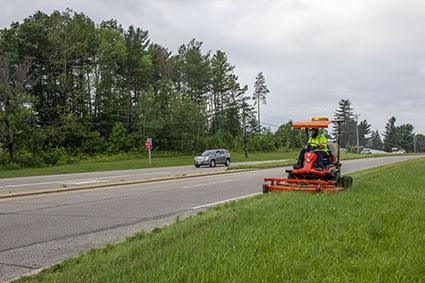Highway Maintenance |
Roadsides |
Mowing Wisconsin's roadsides |
Rural policy |
Urban policy

This urban mowing policy is used in combination with the natural roadsides philosophy and allows for increased mowing frequency in specified urban areas to produce a closer match in vegetation management to adjacent land uses. There are two categories of urban mowing, urban state trunk highways (STH) and urban controlled-access highway interchanges and access roads.
Urban mowing areas identified on Roadside Mowing Interactive Map
HMM 07-05-40 -Urban Mowing
Urban state highways
These are roadways identified as having all of the following attributes. Excluded are areas that have project maintenance agreements, right of way maintained by private individuals, municipalities with an established mowing ordinance, or right of way that historically has not been mowed.
- Not a designated connecting highway
- Right of way within a municipality designated as a municipal extension
- Roadway defined as curb and gutter sections, medians, and roundabouts
- Highways with a speed limit of 50 mph or less
Mowing criteria
- Begin mowing when vegetation reaches 9” in height
- Minimum height shall be maintained at a level necessary to prevent the “scalping” of existing turf
- 10 mowing cycles per mowing season
- Implement best management practices (BMPs) to comply with
NR40 as necessary
Urban controlled-access highway interchanges and access roads
These are controlled-access interchanges and access roads that have all of the following attributes. Controlled-access highways are highways, or sections of highways, that have full or partial access control. If a highway has full controlled-access, the property owner has no right of access to that highway. This includes any interstate and freeway interchanges.
Mowing criteria
- Begin mowing when vegetation reaches 18” in height
- Minimum height shall be 6” in height
- 6 mowing cycles per mowing season
- Implement best management practices (BMPs) to comply with
NR40 as necessary